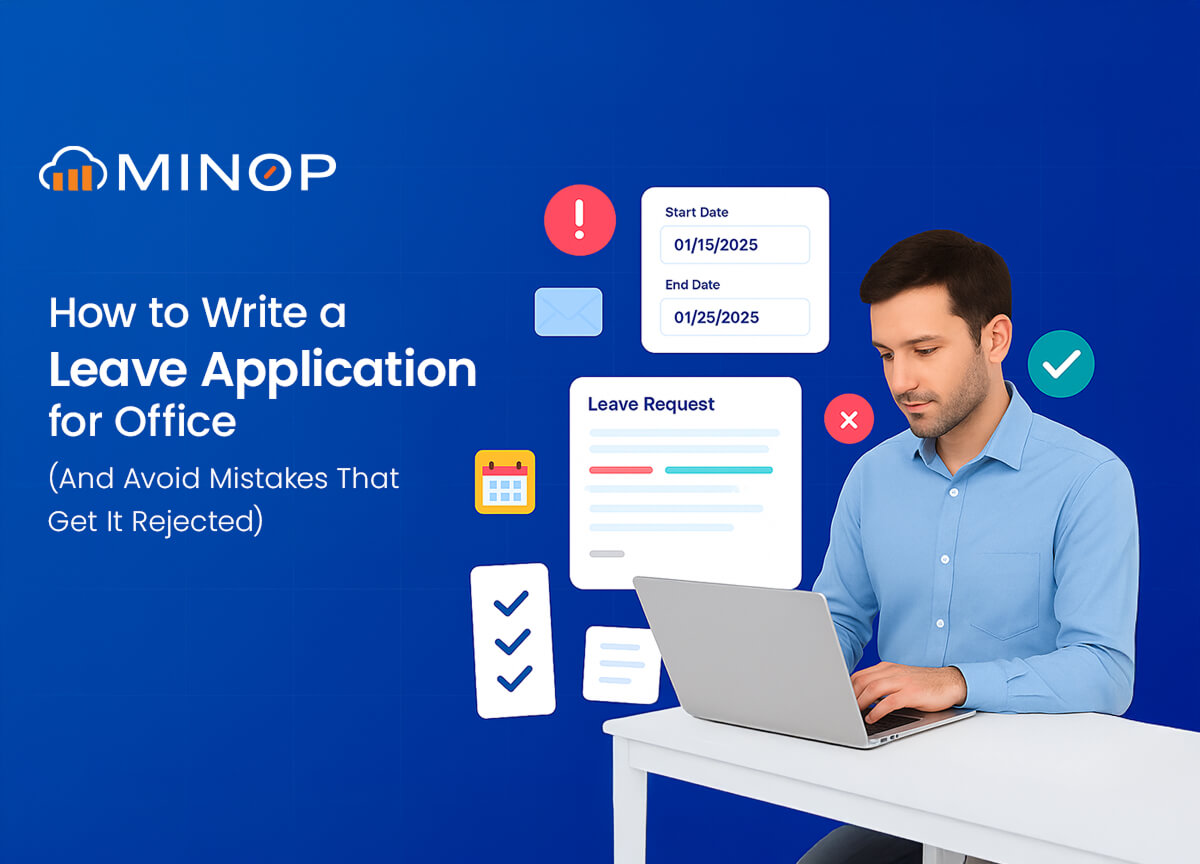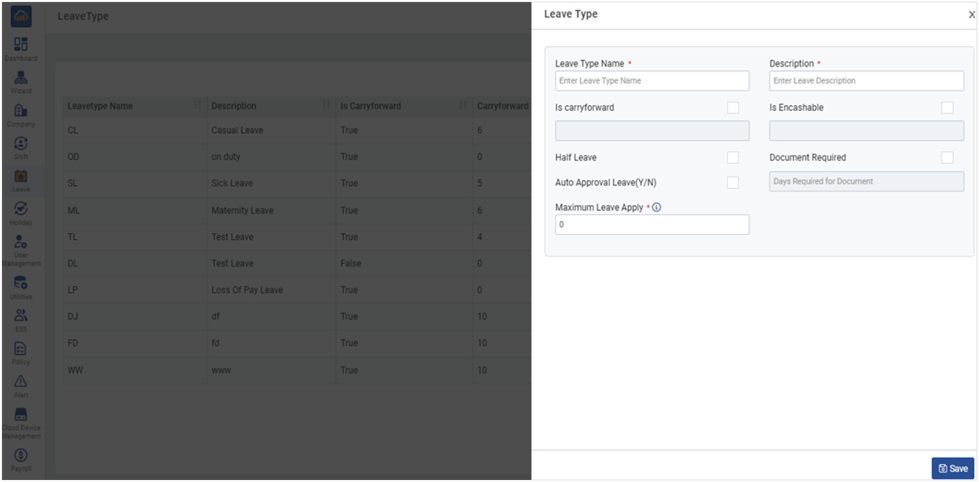How to Write a Leave Application for Office (And Avoid Mistakes That Get It Rejected)
Posted On:- 17 June, 2025 By:- Vaibhav Maniyar
A leave application might seem like a routine task, but it still plays a key role in how you're perceived professionally. It shows respect for your team, transparency with your employer, and accountability for your responsibilities. Yet, many applications are rejected due to simple errors that can be avoided with the right approach.
Whether you're new to your role or a seasoned employee, following the correct tone, structure, and etiquette ensures your leave request is taken seriously. In this guide, we'll walk you through what to include, what to avoid, and how to make sure your application gets approved without delays.
Introduction
Informing your boss about your absence not only solidifies your credibility but also makes you look sincere. However, if your company hierarchy requires you to include several different people in CC and BCC in your mail to your boss, there are some standards in style and tone which should be ingrained in your mind to sound professionally mature. Failing to do so will make things more complex and awkward than ever before due to lack of transparency and miscommunication.
Therefore, whether you are a new fresher in your office or an experienced one amongst your peers, having a checklist for leave applications helps you to get rid of common mistakes and cover almost every bit of info before hitting send. Sure, it could be a sick leave or a casual leave but informing your employer first through a leave application solidifies your credibility and makes you look sincere. But before we do that, let's first learn the definition of a well-written leave application.
What is a leave application for office?
Definition: A leave application is a formal written request from an employee to their employer asking for permission to be absent from work for a specific period. It should include the reason, duration, and plan for covering responsibilities.
Whether it's a half day leave application or a one day leave application, if you inform the situation without getting into too much personal information, writing a perfect leave application for office becomes absolute critical life skill.
Furthermore, on an average 7 out of 10 employees face rejection from their leave application for office. Now this could be due to various reasons regarding scope of work, current workflow or bandwidth at the time of leave, but this does not rule out your chance of presenting a leave application devoid of any mistake which neither raises questions not piques curiosity on your reasons.
6 Mistakes to Avoid When Submitting a Leave Application for Office
Even experienced employees often make basic but critical errors when submitting a leave application. These mistakes, often rooted in poor communication, misunderstanding of workplace protocol, or lack of emotional intelligence, can undermine your credibility and delay or even deny your leave approval.
Here are six professional pitfalls to avoid:
1. Assuming All Leaves Are Approved Automatically
A common mistake is treating leave as a right, not a request. Just because you've earned leave days or had prior approvals doesn't mean each new application will be accepted. Managers evaluate leave requests based on:
Current workload
Team dependencies
Project timelines
Always wait for explicit approval before making travel bookings or personal plans. A professional employee treats each leave application as a formal negotiation, not a procedural routine.
2. Leaving Tasks Pending Without Delegation
When employees leave without clear delegation, it creates confusion and impacts team performance. A mature leave application should proactively mention who will manage your responsibilities during your absence.
Example:
"I've briefed [Colleague Name] on current deliverables and urgent items. They will act as point-of-contact while I'm away."
This signals strategic thinking and reduces the cognitive load on your manager, increasing your chances of approval.

A well-written leave request should include a line or two about who you've assigned your tasks to and what you've done to ensure things run smoothly in your absence.
Related: Why Corporates Should Switch to Cloud Based HR Systems?
3. Adding Unnecessary Personal Details
Many applicants fall into the trap of justifying their leave with personal details-medical histories, family problems, or emotional narratives. This dilutes professionalism and makes the manager uncomfortable.
Example:
"I'd like to request leave for personal reasons"
or
"I'm requesting leave to attend to a family commitment."
The goal is clarity without compromising boundaries. HR doesn't need your life story-just your timeline and plan.
4. Not Providing Enough Detail
A one-liner like "Need leave tomorrow" is inadequate and risks immediate rejection. Your manager doesn't have time to chase context. A strong leave application answers three questions:
When are you leaving and returning?
Why (briefly)?
What's the plan for your workload?
Example:
"I request leave from 4th to 6th July to attend a family event. I've completed the scheduled client reports and briefed my colleague to handle urgent queries."
This shows self-awareness and planning, both key professional traits.
5. Ignoring Company Policy
Many companies require you to apply via HRMS, get approvals through formal channels, or notify multiple reporting managers. Submitting leave only via email or WhatsApp-and assuming it will be tracked-can result in missed documentation and salary deductions.
Before applying, consult your company's leave policy. Respect the process, because procedural non-compliance is viewed as indiscipline, not oversight.
6. Forgetting to Address the Letter Properly
Casual greetings like "Hey" or "Hi [first name]" may be fine in daily communication, but not in formal requests like leave applications. These are official documents, not Slack chats.
Instead, use culturally appropriate salutations based on your company's tone.
Example:
"Dear [Manager's Name]," in global or MNC environments
"Respected Sir/Madam" in traditional or formal Indian setups
Tone sets the stage for how seriously your message is received. Err on the side of formality and deference.
When to Submit a Leave Application for Office (And When Not To)
The timing of your leave application is just as important as its content. A well-written leave request submitted at the wrong time can still raise eyebrows or get ignored. Understanding when to submit a leave application, and when not to, demonstrates professional maturity, strategic foresight, and respect for team workflows.
1. Submit Early for Long Leaves
If you're planning to take multiple days off, especially for travel or family commitments, submit your leave application at least a week in advance. This isn't just polite-it's operationally necessary.
Early notification allows:
Your manager to adjust team workflows
Colleagues to redistribute tasks in time
HR to log and track leaves accurately
Submitting your leave after booking tickets or making plans makes your application a notice, not a request-which undercuts your professionalism and forces your manager into a corner.

Early submission along with a well-written leave application reflects your attitude towards work and respect for team workflow.
2. Submit Same-Day Applications Only for Emergencies or Short Leaves
For short-duration leaves (1 day or half-day), the protocol shifts slightly. In such cases:
First, notify your manager vocally or over chat.
Then, formalize your leave via email or HRMS by end of day.
This sequence-approval first, documentation later-keeps operations smooth while ensuring you stay compliant.
In case of genuine emergencies (health issues, personal loss, etc.), prioritize real-time communication. A brief call or message to your manager should come first. You can follow up with the formal leave application once you're stable.
3. Avoid Applying During These Scenarios (Unless Absolutely Necessary)
Professionalism also means knowing when not to request leave:
During critical project delivery weeks
Without checking your team's leave calendar or workload
Via mass emails or short, abrupt messages without context
Example:
"I won't be in tomorrow" is careless and inconsiderate
Such practices signal poor planning and a disregard for collective responsibilities.
4. Leave Respectfully-Don't Disappear
A polished employee doesn't just send a leave mail and vanish. Once your leave is approved:
Update your status to "Out of Office" in internal tools (Teams, Slack, HRMS)
Ensure availability by proxy-either via a backup colleague or auto-response
If your absence is during business hours, inform key stakeholders directly
This shows ownership and accountability, even in your absence.
How can I write a leave application that sounds professional?
Writing a professional leave application is not just about grammar and format - it's about understanding power dynamics, workplace psychology, and managerial decision-making patterns. A well-crafted leave application does more than inform; it negotiates space, builds credibility, and ensures continuity.
Here's how to approach it like a professional in a corporate environment:
Step 1. Open with Soft Power, Not Self-Justification
Most employees begin with:
"Due to personal reasons, I need leave…"
This sets a defensive tone. Great communicators don't start with the problem-they start with relationship management. Begin with a line like:
"I hope this message finds you well. I wanted to formally request leave for [dates] and ensure all responsibilities are managed in my absence."
This polite, proactive opener signals respect and emotional intelligence, which softens the manager's cognitive resistance to absence.
Step 2. Anchor Your Request in Structure, Not Emotion
Avoid vague language or emotional appeals. Instead, use precise, objective information:
Dates: Clearly state the start and end date of leave
Reason (Optional but Strategic): "Due to personal obligations" or "for a medical consultation" is sufficient. Don't overshare-this is a workplace, not therapy.
Work Continuity Plan: Indicate delegation or status.
Example:
"I've aligned with [Colleague Name] to ensure continuity of [Task/Project], and will brief them on priority items by [date]."
This makes your absence appear non-disruptive and positions you as a planner, not an excuse-maker.
Step 3. Understand the Manager's Context Before Hitting Send
A professional leave request is not just about your calendar-it's about your team's load. Time your request with awareness of:
Project delivery cycles
Team dependencies
Recent leave trends among teammates
Your own attendance record
Managers often subconsciously evaluate your leave based on recency bias (how recently you took a break), bandwidth strain, and timing sensitivity. Don't ignore these.
Pro tip: If you're requesting during a high-load period, acknowledge it.
Example:
"I understand the team is under delivery pressure this week, and I've ensured all my items are wrapped up before [date] to reduce dependency."
Step 4. Avoid Passive Language - Use Decisive, Respectful Framing
Compare these two:
"I am planning to take leave and hope it's okay…"
vs.
"I would like to request leave from [X to Y], and I've made the necessary arrangements to ensure zero disruption."
The second version shows intentionality. It doesn't seek sympathy, it seeks approval through clarity.
Step 5. Follow Communication Hierarchy and Format
Corporate etiquette matters. Here's a clean professional format to follow:
Subject line: Leave Request: [Your Name] – [Dates]
Greeting: "Dear [Manager's Name]"
Intro: Polite opening + purpose
Body: Reason (optional), exact dates, delegation/coverage plan
Closing: Gratitude and contact availability
Sign-Off: "Sincerely" or "Warm regards"
This aligns with both HR policy documentation and email hygiene-something internal compliance systems often check passively.
Step 6. Psychological Framing: Ask, Don't Announce
Leave requests framed as statements ("I will be on leave from…") imply entitlement. A professional application is a request, not a declaration.
Example:
"I kindly request leave from [date] to [date]. Please let me know if you need any adjustments in planning or coverage."
This shows you respect the decision-making authority of your manager, which is critical in hierarchical structures like MNCs.
Related: Struggling with Month-End Attendance Mess? Here's Why.
MinopCloud: A Smarter Alternative to Email
A modern-day leave application for office doesn't have to be an obligatory ritual to showcase your credibility to the company. Instead, it should be a seamless and transparent process that frees you from the hassle of back-and-forth conversations with HR and your boss. MinopCloud was built to ensure you're fully aware of your leave status through a dedicated leave monitor.

Minop Cloud is a leading cloud-based workforce and payroll management platform, has launched a major UI/UX update designed to improve loading speeds, deliver cleaner visuals, and create a more intuitive navigation experience.
After all, no one wants their salary deducted due to miscommunication about leaves taken or remaining. It's 2025; your business should be well past this. Try India's only cloud-based biometric software and attendance API that keeps things personal between you and your boss. No need to write leave applications over email; just apply and get approval through the cloud.
Conclusion
A professional leave application is less about the leave, more about how you protect the team's performance while being absent. Great professionals use this tiny document to display:
Respect
Planning
Awareness of hierarchy
Communication skills
Emotional maturity
Not only it reflects your discipline, planning, and communication maturity, but also it reveals a lot about your attitude towards work. Don't be the employee whose leave mails spark sighs. Be the one who gets a quick 'Approved' because you did things right.
FAQ
How to write a sick leave application for office?
Your sick leave application should be short, clear, and respectful. Include the date of absence, mention it's due to health reasons, and offer to submit a medical certificate if needed. Avoid unnecessary detail about your illness. For instance, "I am writing to inform you that I am unwell and will not be able to attend work on. I request a day of sick leave and will keep you updated if I need additional time. I will ensure any pending tasks are followed up upon my return."
How to write a leave application for office for a week?
Your leave application should specify the dates, the reason (briefly), and outline how your work will be managed in your absence. This reassures your manager that your time away won't disrupt ongoing tasks. For instance, "I would like to request a week's leave from [start date] to [end date] due to [brief reason]. I have handed over [write your task] to [the name of your peer] and briefed them on urgent deliverables. Please let me know if you need anything else before I leave."
How to write a leave application for office for personal reasons?
When the reason for leave is personal, you don't need to disclose sensitive details. Just state that it's for personal reasons and focus on responsibility planning and timeline clarity. For instance, "I would like to request leave from [start date] to [end date] due to personal reasons. I assure you that all my current responsibilities will be updated before my absence. [Colleague] has agreed to cover urgent items during this period. I hope to return on [expected return date]."
Is writing a leave application for office necessary for emergency situations?
No. You have to notify your employer about your current emergency situation as it is not in your hand to continue your work. Therefore, deal with your emergency situation with the best of your capabilities and later when you have time, drop a mail or apply for a leave request via cloud-based time and attendance software.

Comments